Hot Deformation Behavior of Homogenized Mg-13.5Gd-3.2Y-2.3Zn-0.5Zr Alloy via Hot Compression Tests
Abstract
:1. Introduction
2. Theory of Processing Map
3. Materials and Methods
4. Results and Discussion
4.1. Microstructure of As-Cast and Homogenized Samples
4.2. Compression Behavior and Microstructure Evolution
4.2.1. Flow Stress Behavior
4.2.2. Effect of Temperature
4.2.3. Effect of Strain Rate
4.3. Kinetic Analysis
4.4. Characterization of Processing Map and Microstructure of Stability and Instability Regions
5. Conclusions
- (1)
- The homogenized alloy exhibits the typical dynamic recrystallization behavior characteristics. The flow stress increases with the decrease of temperature and the increase of strain rate. Meanwhile, the true stress-strain curves tell that the high strain rate and low temperature make a high work hardening rate.
- (2)
- The constitutive equation of the homogenized alloy is and the deformation activation energy Q (~263.15 kJ/mol) of homogenized alloy is much higher than that of pure Mg (~135 kJ/mol), which is due to the existence of LPSO phases.
- (3)
- LPSO kink deformation becomes an important mean to coordinate deformation when it is difficult to start the sliding system of magnesium alloy during deformation at low temperature. From the further observation of the microstructure evolution, the DRX softening enhances with the increase of temperature which makes the slip system easy to slide. Meanwhile, the flow instability and the stress concentration become serious and the micro-cracks are produced at the intersection of kinks where the lump LPSO phases gather.
- (4)
- According to the processing map, dynamic recrystallization behavior with the strain of 0.5 occurs at two high power dissipation zones: 370–440 °C/0.001–0.006 s−1 and 465–500 °C/0.001–0.05 s−1, respectively, which correspond to the peak power dissipation of 44%. From the observation of compressed specimens, the optimum condition for hot plastic deformation is 465–500 °C/0.001–0.05 s−1.
Author Contributions
Acknowledgments
Conflicts of Interest
References
- Mordike, B.L.; Ebert, T. Magnesium: Properties–applications–potential. Mater. Sci. Eng. A 2001, 302, 37–45. [Google Scholar] [CrossRef]
- Garces, G.; Cabeza, S.; Barea, R. Maintaining high strength in Mg-LPSO alloys with low Yttrium content using severe plastic deformation. Materials 2018, 11, 733. [Google Scholar] [CrossRef] [PubMed]
- Xu, C.; Fan, G.H.; Nakata, T. Deformation Behavior of Ultra-Strong and Ductile Mg-Gd-Y-Zn-Zr Alloy with Bimodal Microstructure. Meter. Mater. Trans. A 2018, 49, 1931–1947. [Google Scholar] [CrossRef]
- Chen, B.; Li, S.; Li, X.L. Hot Compression Deformation Behavior and Processing Maps of Mg-Gd-Y-Zr Alloy. J. Mater. Eng. Perform. 2013, 22, 2458–2466. [Google Scholar] [CrossRef]
- Alizadeh, R.; Mahmudi, R.; Ruano, O.A. Constitutive Analysis and Hot Deformation Behavior of Fine-Grained Mg-Gd-Y-Zr Alloys. Mater. Trans. A 2017, 48, 1–11. [Google Scholar] [CrossRef]
- Drits, M.E.; Sviderskaya, Z.A.; Rokhlin, L.L. Effect of alloying on the properties of Mg–Gd alloys. Meter. Sci. Heat. Treat. 1979, 21, 887–889. [Google Scholar] [CrossRef]
- Rokhlin, L.L. Magnesium Alloys Containing Rare Earth Metals; Taylor and Francis: London, UK, 2003. [Google Scholar]
- Rokhlin, L.L.; Nikitina, N.I. Magnesium-gadolinium and magnesium-gadolinium-yttrium alloys. Z. Metallkd. 1994, 85, 819–823. [Google Scholar]
- Honma, T.; Ohkubo, T.; Kamado, S. Effect of Zn additions on the age-hardening of Mg-2.0Gd-1.2Y-0.2Zr alloys. Acta Mater. 2007, 55, 4137–4150. [Google Scholar] [CrossRef]
- Yamada, K.; Okubo, Y.; Shiono, M. Alloy Development of High Toughness Mg-Gd-Y-Zn-Zr Alloys. Mater. Trans. 2006, 47, 1066–1070. [Google Scholar] [CrossRef] [Green Version]
- Zhou, X.; Liu, C.; Gao, Y. Hot compression behavior of the Mg-Gd-Y-Zn-Zr alloy filled with intragranular long-period stacking ordered phases. J. Alloys Compd. 2017, 724, 528–536. [Google Scholar] [CrossRef]
- Wang, J.F.; Jiang, W.Y.; Guo, S.F. The effect of rod-shaped long-period stacking ordered phases evolution on corrosion behavior of Mg95.33Zn2Y2.67 alloy. Materials 2018, 11, 815. [Google Scholar] [CrossRef] [PubMed]
- Matsuda, M.; Ando, S.; Nishida, M. Dislocation Structure in Rapidly Solidified Mg97Zn1Y2 Alloy with Long Period Stacking Order Phase. Mater. Trans. 2005, 46, 361–364. [Google Scholar] [CrossRef]
- Xu, Y.; Hu, L.X.; Sun, Y. Microstructure and mechanical properties of AZ61 magnesium alloy prepared by repetitive upsetting-extrusion. Trans. Nonferrous Met. Soc. China 2015, 25, 381–388. [Google Scholar] [CrossRef]
- Gao, Z.; Hu, L.; Li, J. Achieving High Strength and Good Ductility in As-Extruded Mg-Gd-Y-Zn Alloys by Ce Micro-Alloying. Materials 2018, 11, 102. [Google Scholar] [CrossRef] [PubMed]
- Zhang, B.; Ye, F.; Liang, Y.F. The rolling performance of Fe-6.5 wt.% Si sheets edged with stainless steel. Mater. Res. Express 2017, 4. [Google Scholar] [CrossRef]
- Zhou, H.; Wang, Q.D.; Ye, B.; Guo, W. Hot deformation and processing maps of as-extruded Mg-9.8Gd-2.7Y-0.4Zr Mg alloy. Mater. Sci. Eng. A 2013, 576, 101–107. [Google Scholar] [CrossRef]
- Tahreen, N.; Zhang, D.F.; Pan, F.S. Characteri zation of hot deformation behavior of an extruded Mg-Zn-Mn-Y alloy containing LPSO phase. J. Alloys Compd. 2015, 644, 814–823. [Google Scholar] [CrossRef]
- Yu, J.M.; Li, X.B.; Zhang, Z.M. Mechanical Behavior and Microstructure Evolution of Mg-Gd-Y-Zn-Zr Alloy during Multipass Hot Compression Deformation. Mater. Sci. Forum 2016, 849, 186–195. [Google Scholar] [CrossRef]
- Li, Y.; Xiao, W.; Wang, F.; Hu, T.; Ma, C. The roles of long period stacking ordered structure and Zn solute in the hot deformation behavior of Mg-Gd-Zn alloys. J. Alloys Compd. 2018, 745, 33–43. [Google Scholar] [CrossRef]
- Xu, C.; Zheng, M.Y.; Chi, Y.Q. Microstructure and mechanical properties of the Mg-Gd-Y-Zn-Zr alloy fabricated by semi-continuous casting. Mater. Sci. Eng. A 2012, 549, 128–135. [Google Scholar] [CrossRef]
- Xu, C.; Zheng, M.Y.; Xu, S.W. Microstructure and mechanical properties of Mg-Gd-Y-Zn-Zr alloy sheets processed by combined processes of extrusion, hot rolling and ageing. Mater. Sci. Eng. A 2013, 559, 844–851. [Google Scholar] [CrossRef]
- Xia, X.; Chen, Q.; Zhang, K. Hot deformation behavior and processing map of coarse-grained Mg-Gd-Y-Nd-Zr alloy. Mater. Sci. Eng. A 2013, 587, 283–290. [Google Scholar] [CrossRef]
- Prasad, Y.V.R.K.; Seshacharyulu, T. Processing maps for hot working of titanium alloys. Mater. Sci. Eng. A 1998, 243, 82–88. [Google Scholar] [CrossRef]
- Von Mises, R. Selected Papers of Richard von Mises. Vol. One: Geometry, Mechanics, Analysis; American Mathematical Society: Providence, RI, USA, 1963. [Google Scholar]
- Oh-Ishi, K.; Mendis, C.L.; Homma, T. Bimodally grained microstructure development during hot extrusion of Mg-2.4Zn-0.1Ag-0.1Ca-0.16Zr (at.%) alloys. Acta Mater. 2009, 57, 5593–5604. [Google Scholar] [CrossRef]
- Mabuchi, M.; Kubota, K.; Higashi, K. Effect of hot extrusion on mechanical properties of a Mg-Si-Al alloy. Mater. Lett. 1994, 19, 247–250. [Google Scholar] [CrossRef]
- Prasad, Y.V.R.K.; Seshacharyulu, T. Modelling of hot deformation for microstructural control. Metall. Rev. 1998, 43, 243–258. [Google Scholar] [CrossRef]
- Lv, B.J.; Peng, J.; Zhu, L.L.; Wang, Y.J.; Tang, A.T. The effect of 14H LPSO phase on dynamic recrystallization behavior and hot workability of Mg-2.0Zn-0.3Zr-5.8Y alloy. Mater. Sci. Eng. A 2014, 599, 150–159. [Google Scholar] [CrossRef]
- Sakai, T.; Jonas, J.J. Dynamic recrystallization: Mechanical and microstructural considerations. Acta Metall. 1984, 32, 189–209. [Google Scholar] [CrossRef]
- Zhang, Z.; Du, Y.; Zhang, G. Microstructure and Mechanical Properties of Mg-Gd-Y-Zn-Zr Alloy Prepared by Repetitive Upsetting and Extrusion. Mater. Trans. 2018, 59. [Google Scholar] [CrossRef]
- Du, Y.; Zhang, Z.Z.; Zhang, G.S.; Yan, Z.M.; Yu, J.M. Grain Refinement and Texture Evolution of Mg-Gd-Y-Zn-Zr Alloy Processed by Repetitive Upsetting-extrusion at Decreasing Temperature. Rare Met. Mater. Eng. 2018, 47, 1422–1428. [Google Scholar]
- Yang, Q.Y.; Deng, Z.H.; Zhang, Z.Q.; Liu, Q.; Jia, Z.H.; Huang, G.J. Effects of strain rate on flow stress behavior and dynamic recrystallization mechanism of Al-Zn-Mg-Cu aluminum alloy during hot deformation. Mater. Sci. Eng. A 2016, 662, 204–213. [Google Scholar] [CrossRef]
- Zhang, Z.R.; Yang, X.Y.; Xiao, Z.Y.; Wang, J.; Zhang, D.X.; Liu, C.M.; Taku, S. Dynamic recrystallization behaviors of a Mg-4Y-2Nd-0.2Zn-0.5Zr alloy and the resultant mechanical properties after hot compression. Mater. Des. 2016, 97, 25–32. [Google Scholar] [CrossRef] [Green Version]
- Liu, H.; Ju, J.; Yang, X.W.; Song, D.; Jiang, J.H.; Ma, A. A two-step dynamic recrystallization induced by LPSO phases and its impact on mechanical property of severe plastic deformation processed Mg97Y2Zn1, alloy. J. Alloys Compd. 2017, 704, 509–517. [Google Scholar] [CrossRef]
- Shalbafi, M.; Roumina, R.; Mahmudi, R. Hot deformation of the extruded Mg-10Li-1Zn alloy: Constitutive analysis and processing maps. J. Alloys Compd. 2017, 696, 1269–1277. [Google Scholar] [CrossRef]
- Wu, H.; Wen, S.P.; Huang, H. Hot deformation behavior and constitutive equation of a new type Al-Zn-Mg-Er-Zr alloy during isothermal compression. Mater. Sci. Eng. A 2016, 651, 415–424. [Google Scholar] [CrossRef]
- Chen, T.; Chen, Z.; Shao, J. Evolution of LPSO phases in a Mg-Zn-Y-Gd-Zr alloy during semi-continuous casting, homogenization and hot extrusion. Mater. Des. 2018, 152, 1–9. [Google Scholar] [CrossRef]
- Zener, C.; Hollomon, J.H. Effect of Strain Rate Upon Plastic Flow of Steel. J. Appl. Phys. 1944, 15, 22–32. [Google Scholar] [CrossRef]
- Xu, C.; Zheng, M.Y.; Wu, K. Effect of ageing treatment on the precipitation behavior of Mg-Gd-Y-Zn-Zr alloy. J. Alloys Compd. 2013, 550, 50–56. [Google Scholar] [CrossRef]
- Zhang, G.S.; Zhang, Z.M.; Du, Y.; Yan, Z.M.; Che, X. Effect of Isothermal Repetitive Upsetting Extrusion on the Microstructure of Mg-12.0Gd-4.5Y-2.0Zn-0.4Zr Alloy. Materials 2018, 11, 2092. [Google Scholar] [CrossRef] [PubMed]
- Xiao, H.C.; Jiang, S.N.; Tang, B. Hot deformation and dynamic recrystallization behaviors of Mg-Gd-Y-Zr alloy. Mater. Sci. Eng. A 2015, 628, 311–318. [Google Scholar] [CrossRef]

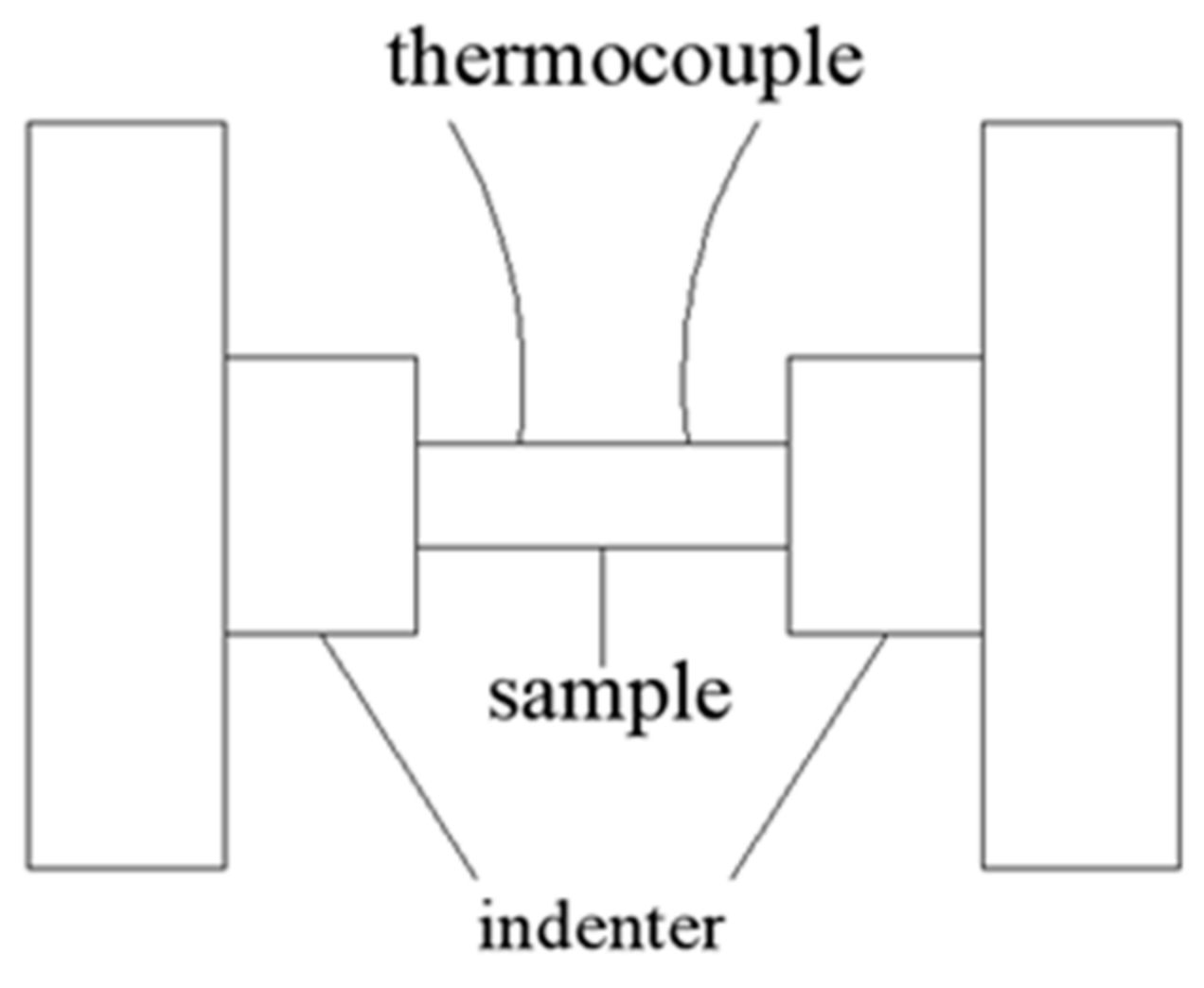



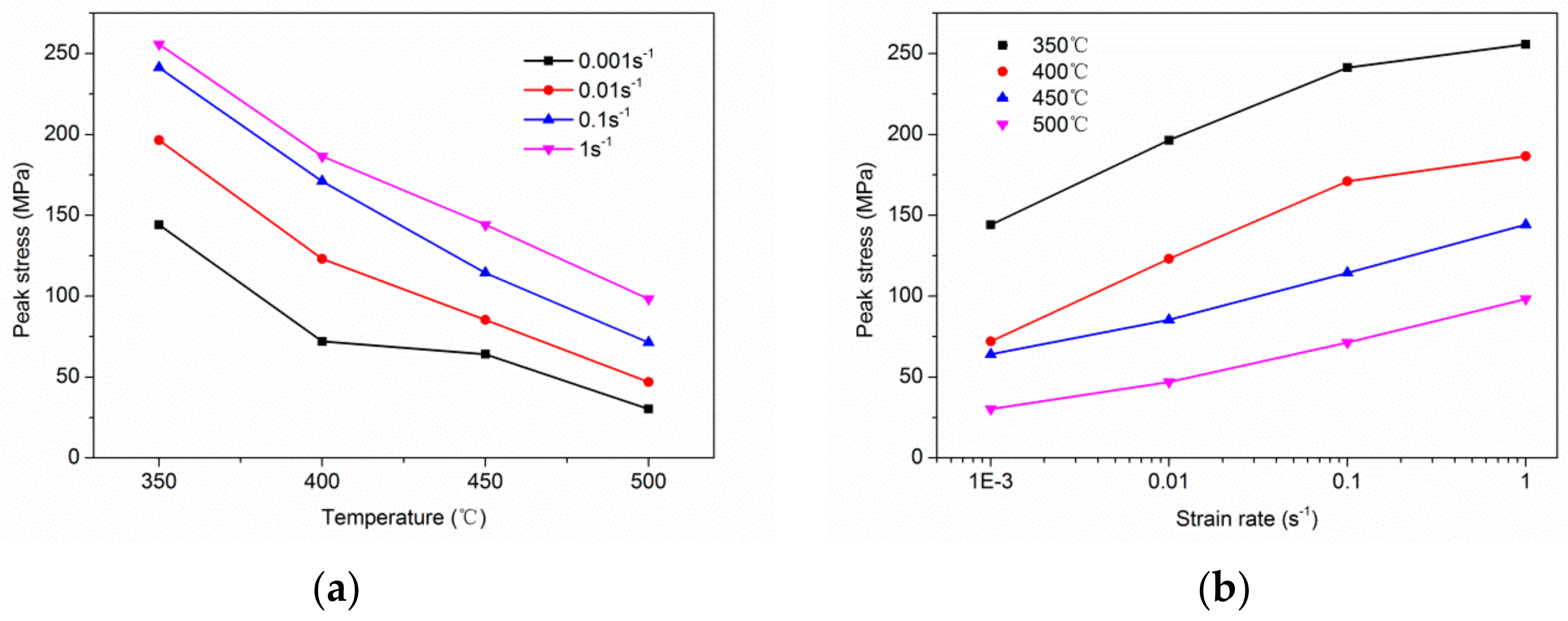
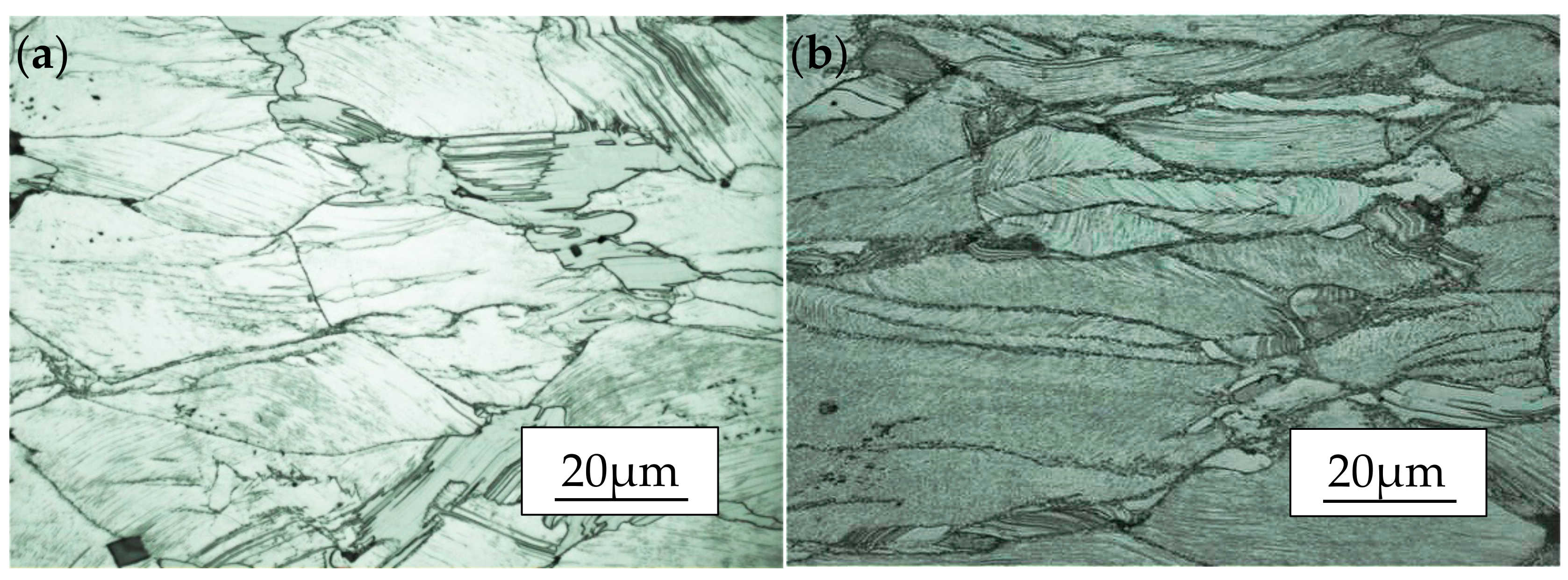
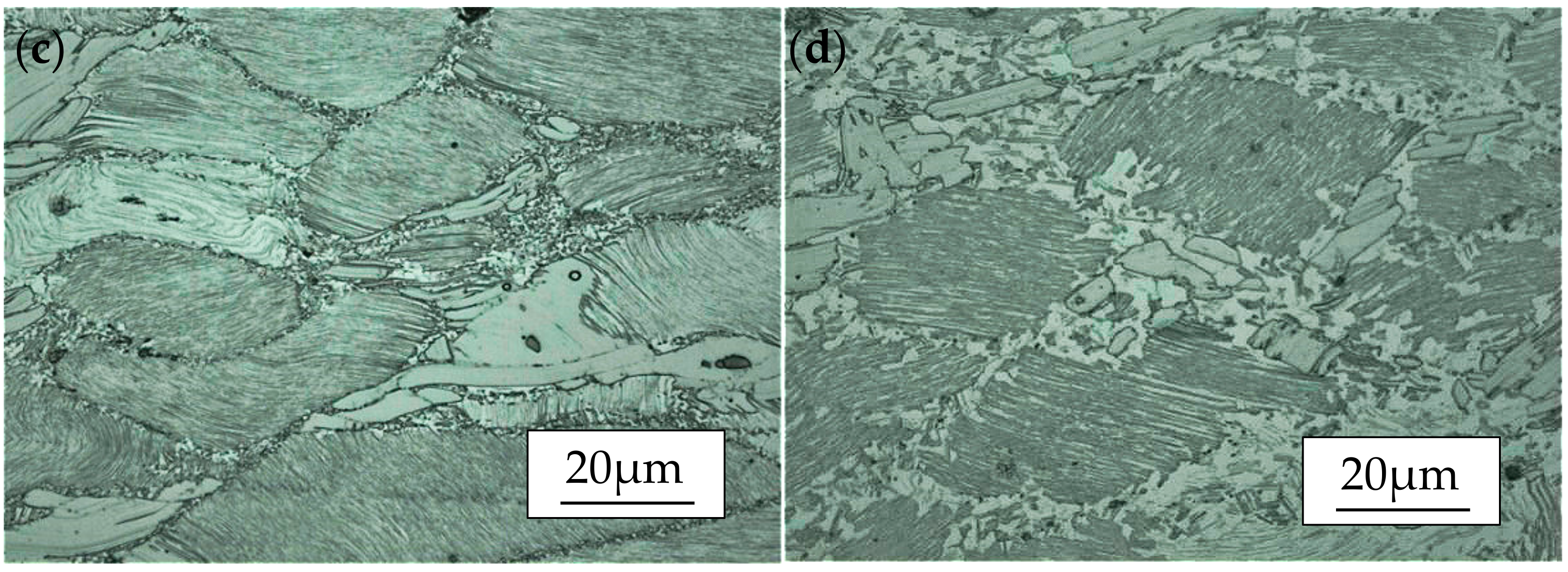
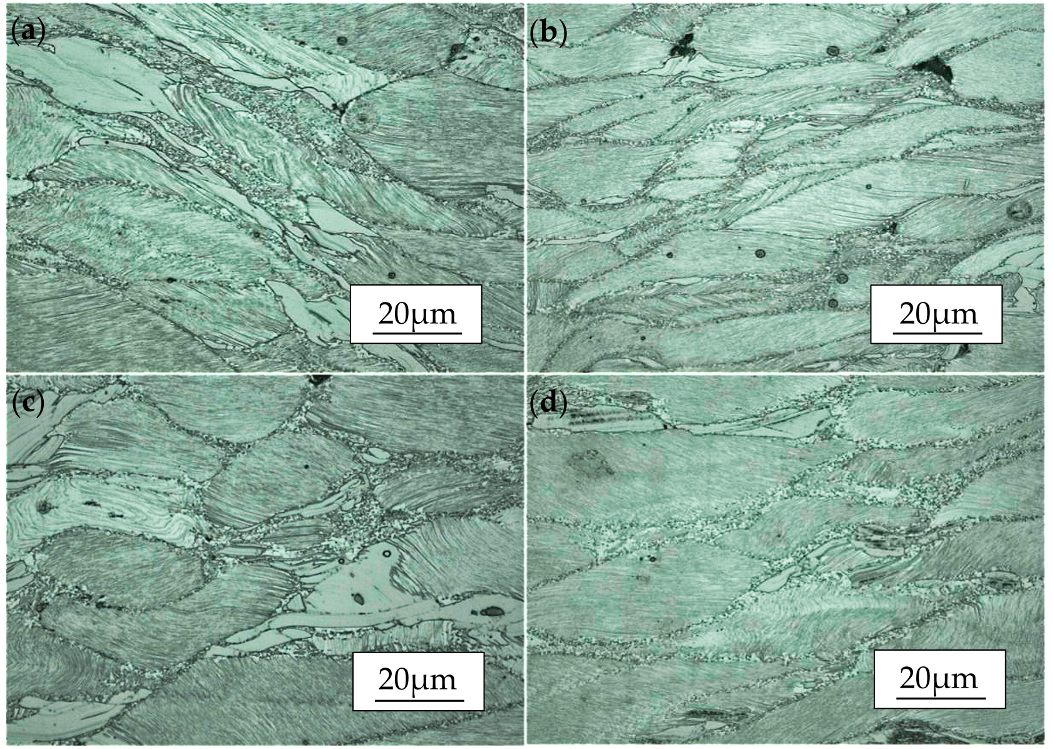

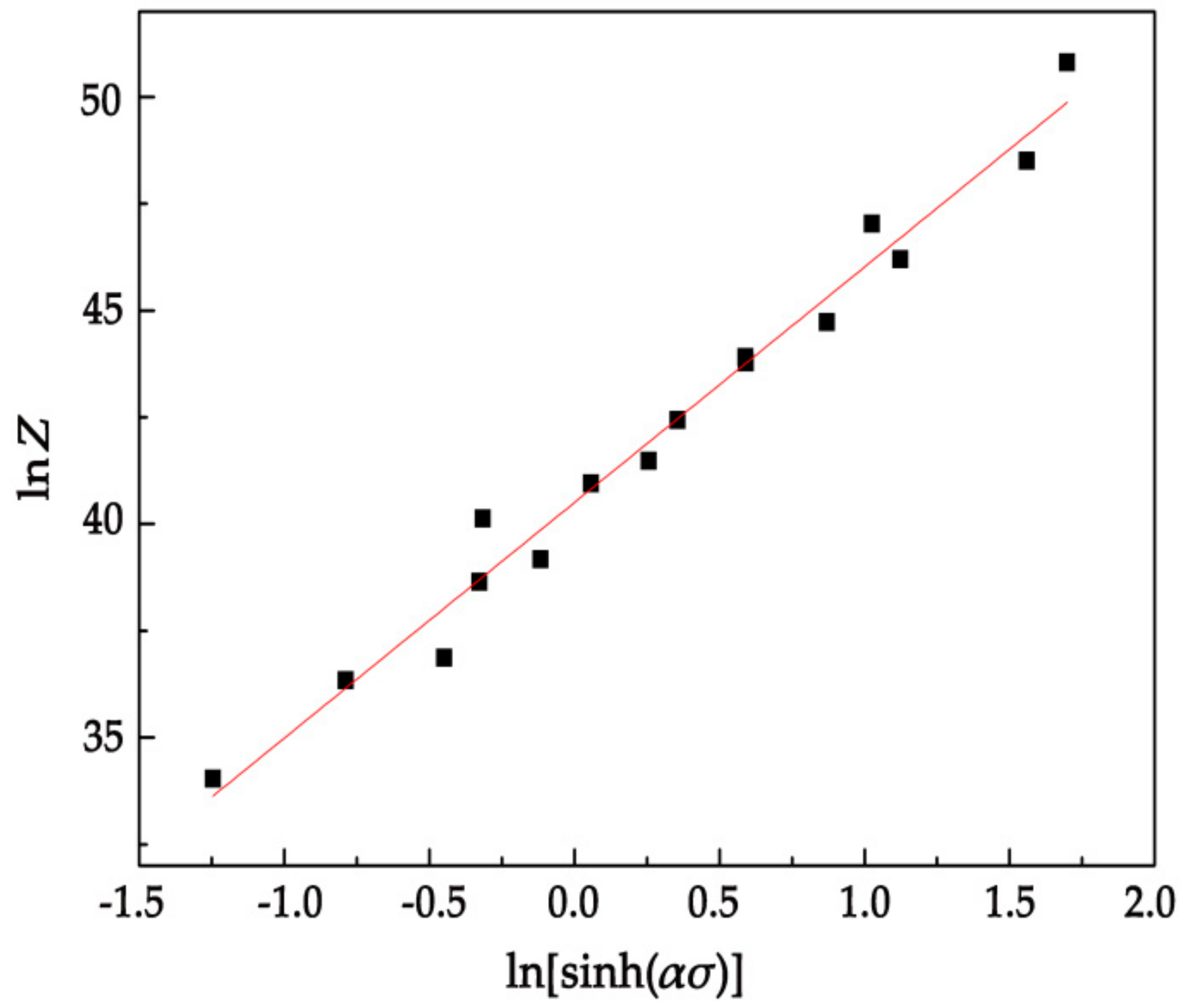


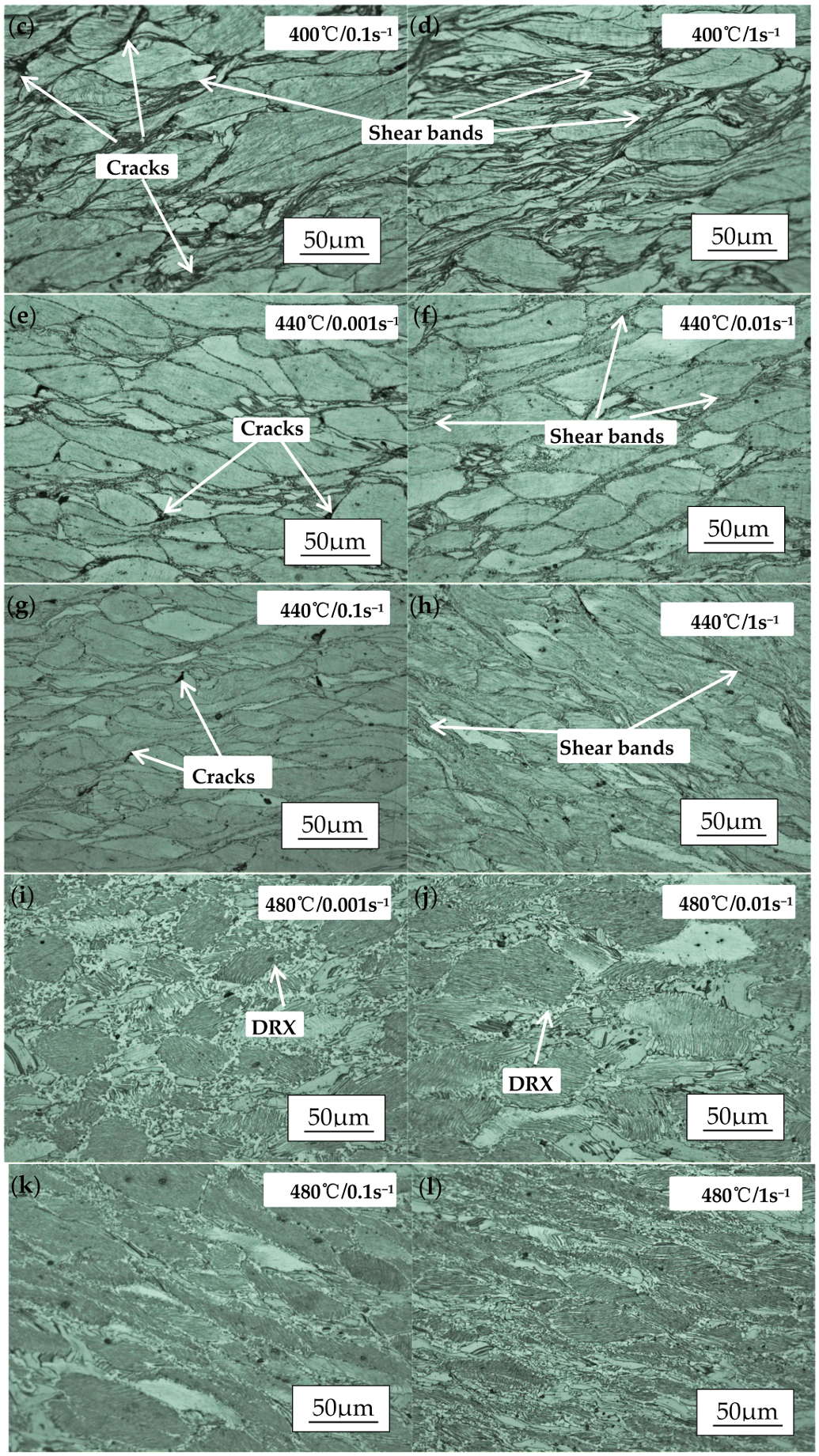
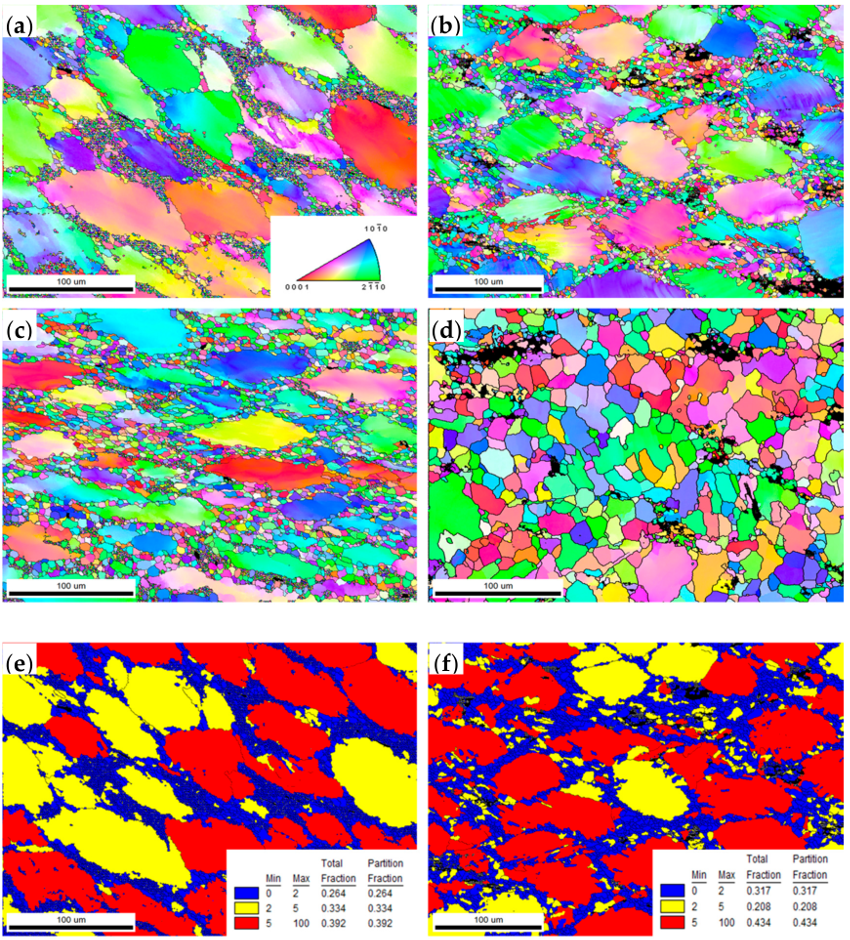

| Points | Mg | Gd | Y | Zn | Zr |
|---|---|---|---|---|---|
| 1# | 98.20 | 0.55 | 0.23 | 0.80 | 0.22 |
| 2# | 88.03 | 4.21 | 2.62 | 5.03 | 0.11 |
| 3# | 81.89 | 11.35 | 4.32 | 2.10 | 0.34 |
| 4# | 29.10 | 24.83 | 42.51 | 0.71 | 2.85 |
© 2018 by the authors. Licensee MDPI, Basel, Switzerland. This article is an open access article distributed under the terms and conditions of the Creative Commons Attribution (CC BY) license (http://creativecommons.org/licenses/by/4.0/).
Share and Cite
Zhang, Z.; Yan, Z.; Du, Y.; Zhang, G.; Zhu, J.; Ren, L.; Wang, Y. Hot Deformation Behavior of Homogenized Mg-13.5Gd-3.2Y-2.3Zn-0.5Zr Alloy via Hot Compression Tests. Materials 2018, 11, 2282. https://doi.org/10.3390/ma11112282
Zhang Z, Yan Z, Du Y, Zhang G, Zhu J, Ren L, Wang Y. Hot Deformation Behavior of Homogenized Mg-13.5Gd-3.2Y-2.3Zn-0.5Zr Alloy via Hot Compression Tests. Materials. 2018; 11(11):2282. https://doi.org/10.3390/ma11112282
Chicago/Turabian StyleZhang, Zhimin, Zhaoming Yan, Yue Du, Guanshi Zhang, Jiaxuan Zhu, Luying Ren, and Yiding Wang. 2018. "Hot Deformation Behavior of Homogenized Mg-13.5Gd-3.2Y-2.3Zn-0.5Zr Alloy via Hot Compression Tests" Materials 11, no. 11: 2282. https://doi.org/10.3390/ma11112282





